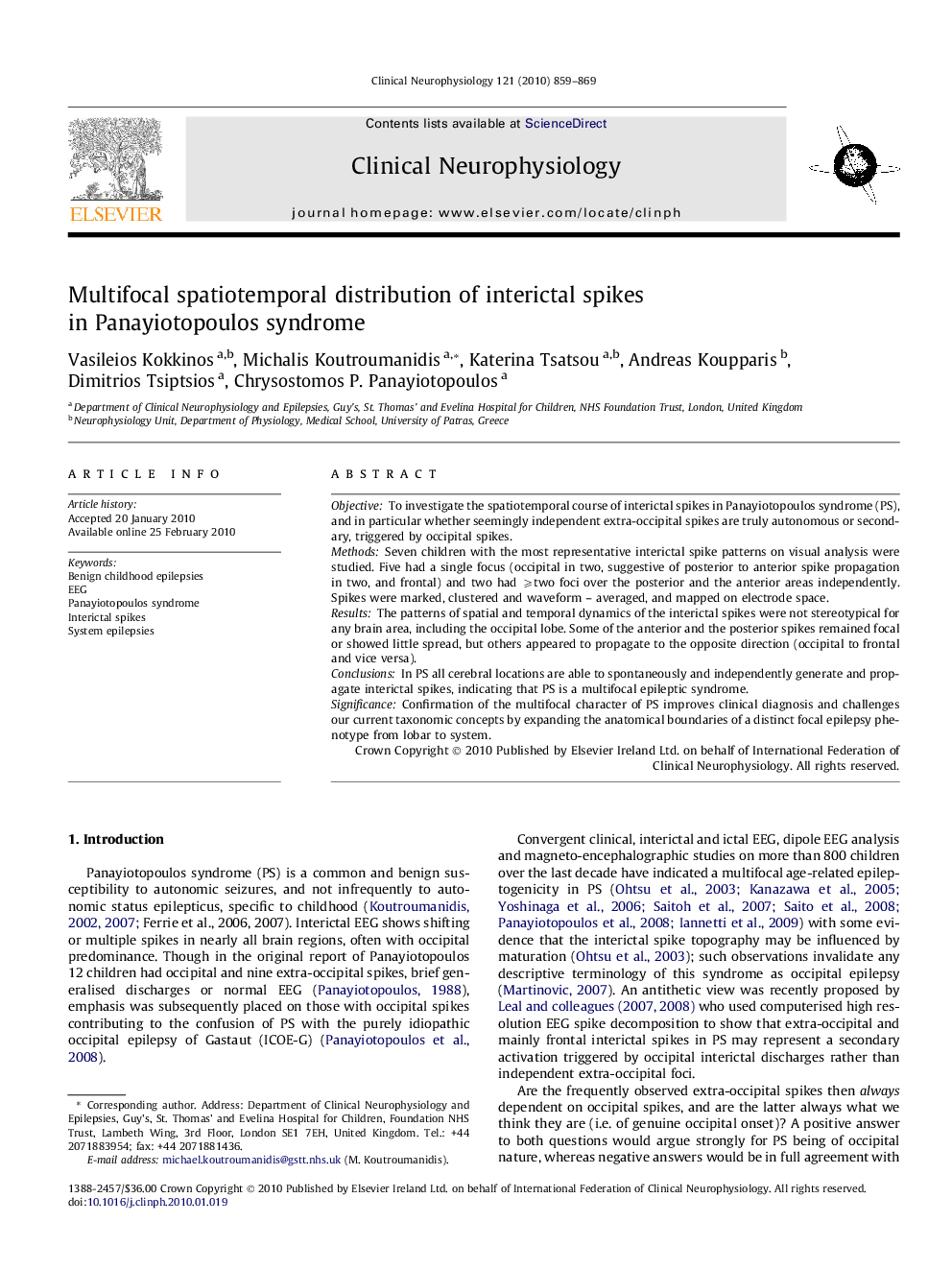| Article ID | Journal | Published Year | Pages | File Type |
|---|---|---|---|---|
| 3045679 | Clinical Neurophysiology | 2010 | 11 Pages |
ObjectiveTo investigate the spatiotemporal course of interictal spikes in Panayiotopoulos syndrome (PS), and in particular whether seemingly independent extra-occipital spikes are truly autonomous or secondary, triggered by occipital spikes.MethodsSeven children with the most representative interictal spike patterns on visual analysis were studied. Five had a single focus (occipital in two, suggestive of posterior to anterior spike propagation in two, and frontal) and two had ⩾two foci over the posterior and the anterior areas independently. Spikes were marked, clustered and waveform – averaged, and mapped on electrode space.ResultsThe patterns of spatial and temporal dynamics of the interictal spikes were not stereotypical for any brain area, including the occipital lobe. Some of the anterior and the posterior spikes remained focal or showed little spread, but others appeared to propagate to the opposite direction (occipital to frontal and vice versa).ConclusionsIn PS all cerebral locations are able to spontaneously and independently generate and propagate interictal spikes, indicating that PS is a multifocal epileptic syndrome.SignificanceConfirmation of the multifocal character of PS improves clinical diagnosis and challenges our current taxonomic concepts by expanding the anatomical boundaries of a distinct focal epilepsy phenotype from lobar to system.
